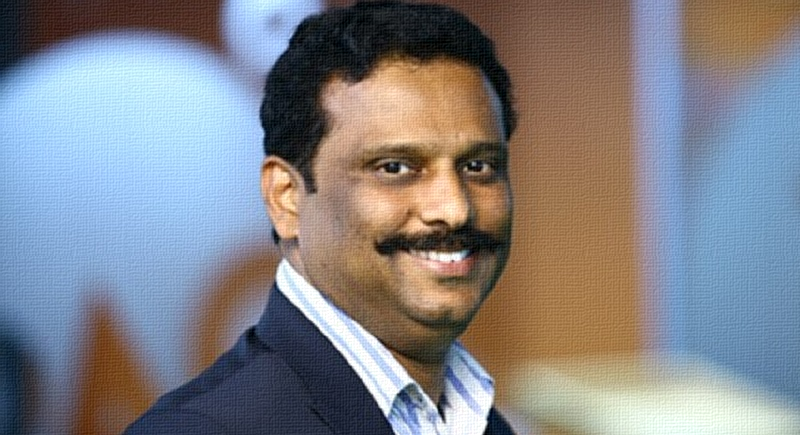How India’s early cloud veteran Suresh Sambandam scripted a turnaround with KiSSFLOW
Tough times never last. Tough people do. Chennai-based serial entrepreneur Suresh Sambandam's journey - from being a 19-year-old entrepreneur to a software analyst with a patent to his name and back to entrepreneurship - is one of tenacity. While his last product never scaled the heights it could have, Suresh was agile enough to create a new product even as the company struggled. The bet has paid off, and remarkably so. YourStory caught up with him recently to find out more about his latest venture, KiSSFLOW.

Sridhar Vembu of Zoho and Girish Mathrubootham of Freshworks are inspirations to millions in the millennial generation. But the Software-as-a-Service (SaaS) universe has a third hero who’s also quietly inspiring many. Meet Suresh Sambandam, the Founder of 15-year-old OrangeScape, and more recently, KiSSFLOW, a four-year-old SaaS startup.
The company, which follows the “keep it simple, stupid” philosophy for workflow management, has managed to capture the global business process management market and now serves 10,000-plus clients, including biggies like Airbus, Danone, Michelin, and Pepsi. KiSSFLOW is running on an ARR of $10 million (a number that the company does not want to confirm). But getting to this point wasn’t easy.
Like Sridhar and Girish, Suresh too comes from a humble background. The resident of Chennai in Tamil Nadu, he completed his bachelor’s degree in commerce and taught himself technology in the early nineties. He ended up working in HP and Selectica before he set up OrangeScape, completely self-funded, a Platform-as-a-Service (PaaS) business, in 2003. PaaS is a layer that allows clients to build and manage their applications without having to invest in infrastructure. Suresh bet big on this business. Orangescape even raised $1 million in 2012 from the Indian Angels Network.
By 2011, Suresh was a leading pioneer in the PaaS industry and was considered to be a leading founder helping the Indian cloud industry go global. Even Girish Mathrubootham, the Founder of Freshworks, who had just started up around that time, was known to look out for news about OrangeScape. But as luck would have it, it was software as a service (SaaS) that went on to become an investor favourite.
At that time, Suresh was a believer in building technology, which meant he did not pay as much attention to marketing. And that's possibly where things went wrong,
“Most products do not succeed in India because of the lack of marketing knowledge,” he explains.
By 2013, Suresh was in a position where he was forced to reinvent himself because of market conditions. In 2011, he had raised $1 million from the Indian Angels Network and saw people who had once looked up to him creating more wealth and growing more than Orangescape had. The pressure began to mount; by mid-2013, he was being written off by the industry and had almost run out of money.
But the fact that he had, through OrangeScape, created intellectual property (IP), which was registered and filed, kept him going. He was was able to sell the IP for Rs 2 crore, money that kept him afloat till December 2013.
The situation with Orangescape notwithstanding, Suresh was not one to lose faith in entrepreneurship.
Despite his circumstances, in June 2013, he launched KiSSFLOW to capture a niche market: business workflow management.
The KiSS of success
KiSSFLOW simplifies the complex process of managing multiple apps, and this is what led to a change in fortunes. KiSSFLOW's revenues began to climb, and soon enough, a deal with a large American corporate in the packaging industry brought in business worth $500,000. That signalled the end of troubled times and put the company's growth back on track.
This when things got interesting all around. Apart from reinventing his business, Suresh also reinvented himself: he went from being a suit-wearing corporate executive to an informally dressed startup executive. When asked about this change in persona, Suresh says that brand building and image building are very important in the startup world. He explains that when the product becomes a brand, “even the founder should be out there building an image”.
This is something that Zoho's Sridhar and Freshworks' Girish too have mastered over the years in different ways.
“The application platform as a service (aPaaS) we heavily bet on failed to materialise," he admits at a conversation we're having at his well appointed offices in Tidel Park, a software centre in Chennai. He also points out, "Even leaders like Google had to re-strategise by building other cloud services and going beyond their PaaS offerings.”
And so, Suresh refused to give up.
I would never give up because I have come up the hard way. I am not born to wealth and I have never relaxed or fallen back upon something from legacy to bail me out,” he says.
What's making KiSSFLOW click
The software platform lets users choose from more than 50 ready-to-use apps such as travel reimbursements to employee on-boarding. It can be installed and customised to an automated application as well.
The software gives you a drag-and-drop interface with more than 14 types of fields to create a perfect form. It helps business teams create pre-populated fields, add tables, group similar data into sections, and use logic to build a fool-proof form.
It also lets you diagram your workflow, set deadlines, create conditions, and model a company’s process just as it appears in the business administrative manager’s mind. In addition, it helps create triggers to skip unneeded steps and create complex workflows with parallel branches. These complex workflows can be used as and when needed instead of provisioning them with legacy software, which is expensive.
In essence, these automated workflows help employees work faster instead of having to depend on broken tasks in different apps.
According to Gartner, PaaS is a $18.6 billion business market in 2019 and estimated to reach $22.7 billion by 2020. Meanwhile, SaaS, according to the same source, is a $73 billion market globally and is poised to cross $100 billion by 2020.
Suresh clearly made the switch to SaaS at the right time, as as PaaS is currently the slowest growing cloud service. As products go, it was a case of being third-time-lucky.
With KiSSFLOW, we got the technology, market category, UX, and the product-market fit right, which led to its eventual success. KiSSFLOW became a market leader in the do-it-yourself, low-code business process, and workflow management software space,” Suresh says.
In the first two products (from Orangescape) they demonstrated technology innovation through their patents, which came in handy when the going got tough. However, the key learning was that a business succeeds only when there is all-round innovation across all the organisation.
What changed finally?
“With respect to KiSSFLOW, not only did we innovate on technology and product management, we also innovated on user experience, an area often missed, and of course most importantly in sales and marketing,” Suresh says.
KiSSFLOW, he explains, was able to reach 10,000-plus customers because of a model called Desk Selling & Marketing (DSM) that allows “a small team of people sitting in a city like Chennai, and not Mumbai, or New York or London, to sell to customers big and small across the globe”.
The company sells it software in 121 countries, and the credit for this success goes to the DSM approach. The model relies heavily on inbound marketing, which forced potential customers to self-select from the offerings of KiSSFLOW. This eliminated significant noise and reduced the cost of acquisition. In the US, large corporates like Salesforce are known to spend more than $75 to acquire a customer because of their outbound sales, whereas startups in the SaaS world spend under $10 to acquire a customer by selling purely through the desk.
“In the US when large companies are doing 18 months of monthly revenue to RoI, we were able to do it in 6-9 months. The inbound marketing model is also tightly coupled with an inside sales process that handles qualification through on-boarding as a customer success process rather than a sales process,” Suresh says.
KiSSFLOW now counts the likes of Pepsi, Airbus, Michelin, Jet, Casio and Disney, among others, as its clients today. And all of the selling happens out of Chennai, from a desk, without a feet-on-the-street sales force like most enterprise sales teams.
The key is not just selling, but also delivering on exceptional customer experience,” Suresh says.
Unlike its competitors, be it Pega, Appian, or Outsystems, the KiSSFLOW platform does not require expensive consulting services, which often cost 3x-5x the cost of the software, to be able to derive real value.
KiSSFLOW’s core differentiator is that it is a self-service platform simple enough for business users to configure without any programing requirement.
It claims to meet the workflow automation needs of every team, department, and organisation, and deploys the most intelligent business process management tools to bring in more efficiency, control, and accountability.
Similar new-age companies like Bizagi, Bitrix24, NewGen, Podio and Workflow Max compete in the same space as KiSSFLOW and have raised funding too. NewGen has raised $85.7 million, while Bizagi raised $56.7 million. While Suresh is not currently looking to raise money, he says he is always talking to investors.
KiSSFLOW is growing rapidly and now has close to 200 employees. It stands tall as an example of the never-say-die attitude of the Indian entrepreneur.
As Sridhar Vembu, Founder of Zoho, puts it:
“Entrepreneurs who want to build institutions will go through any hardship before they succeed.”
Only time will tell if this can be another $100 million business from India.











